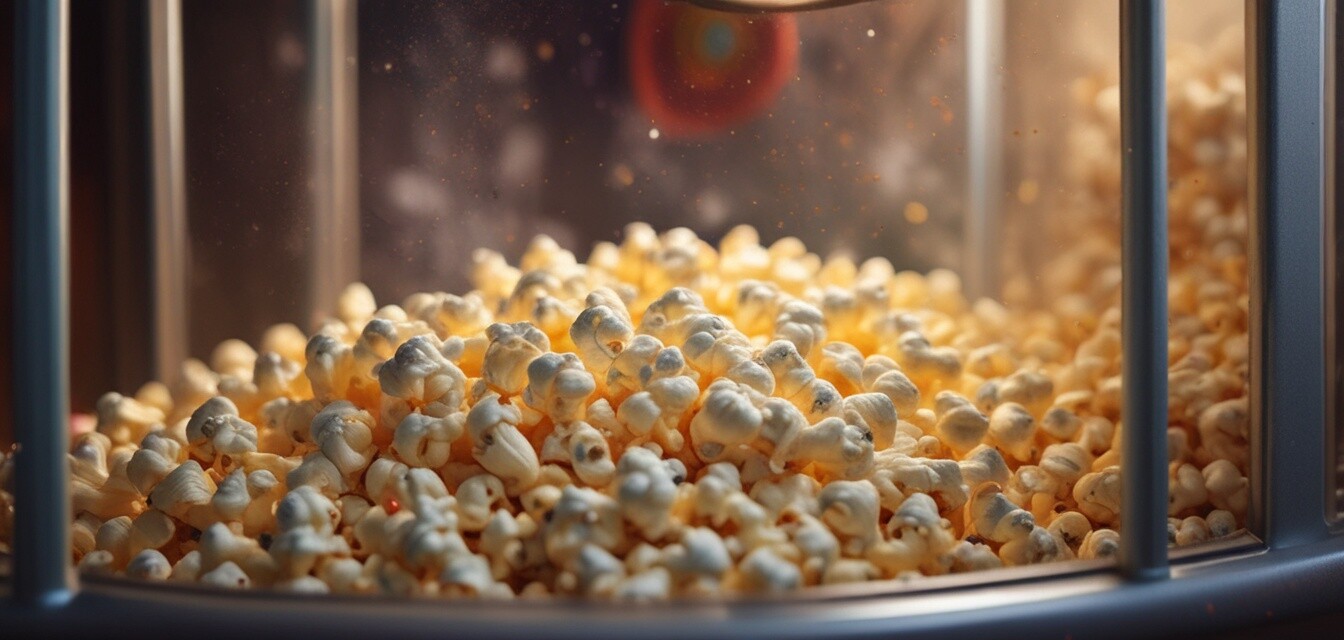
The Chemistry Behind Perfectly Popped Popcorn
Key Takeaways
- Perfect popping depends on moisture content and ideal temperature.
- The structure of the kernel plays a crucial role in the popping process.
- Flavoring methods enhance the popcorn experience exponentially.
- Varieties of kernels offer unique popping characteristics.
- Popcorn popping is a fascinating interplay of science and enjoyment.
Popcorn is not just a tasty snack; it is also a remarkable example of physical chemistry in action. Understanding how popcorn pops can greatly enhance your enjoyment of this beloved treat. In this comprehensive article, we will explore the scientific principles behind popping popcorn, including moisture content, temperature, and the different types of kernels available. If you're eager to master the art of popcorn preparation, read on!
The Science of Popcorn Kernels
Popcorn kernels have unique characteristics that allow them to pop. The anatomy of a popcorn kernel consists of:
- Pericarp: The hard outer shell that protects the kernel's moisture content.
- Endosperm: The starchy interior that expands when heated.
- Moisture Content: The right moisture level is essential for successful popping.
To illustrate the distinct components and abilities of popcorn kernels, let’s take a look at the following table:
| Part of Kernel | Function |
|---|---|
| Pericarp | Prevents moisture loss and provides the pressure needed to pop. |
| Endosperm | Expands and turns into the fluffy part of popped corn. |
| Moisture | Thermal energy turns moisture into steam, causing the kernel to explode. |
Optimal Conditions for Popping
The synergy between temperature and moisture is crucial for great popcorn. Let’s explore these factors in detail:
Moisture Levels
Popcorn kernels must have around 13-14% moisture for optimal popping. This moisture turns to steam when heated, leading to pressure build-up. If kernels are too dry, they won’t pop effectively; if too moist, they might not heat up properly.
Popping Temperature
A temperature of approximately 356°F (180°C) is ideal for popcorn to pop. At this temperature, the moisture inside the kernel turns into steam, creating enough pressure to rupture the pericarp and explode the kernel into tasty, fluffy popcorn. If heated too slowly, the kernel may scorch before popping.
Tips for Popping Perfect Popcorn
- Store kernels properly: Keep them in an airtight container to maintain moisture levels.
- Use the right popping method: From stovetop to microwave, choose a method that retains heat.
- Control the temperature: Avoid high heat initially; allow gradual heating for better popping results.
- Experiment with flavors: Add seasonings after popping to enhance taste and texture.
Types of Popcorn Kernels
Different types of popcorn kernels can yield diverse results. Here’s a brief overview:
| Type of Kernel | Characteristics |
|---|---|
| Butterfly | Larger, irregular shape with many "wings" that catch toppings. |
| Medium | Balanced size; easy for seasoning and preferred in theaters. |
| Hulless | Popcorn without a hard outer shell; a tender, less chewy snack. |
| White | Smaller, white popcorn with a soft, delicate crunch. |
| Yellow | Classic popcorn; larger kernels with a buttery flavor and appearance. |
Enhancing Your Popcorn Experience
After mastering the physics of popping, it’s time to consider flavors and seasonings. Popcorn can be deliciously customized with:
- Salt and butter
- Cheese powders
- Spices like paprika or chili powder
- Sweet toppings like caramel or chocolate
How to Flavor Popcorn
For the best results, add flavorings right after popping. While the kernels are still hot, they will better absorb any seasonings, enhancing the flavor.
Conclusion
The chemistry behind perfectly popped popcorn is fascinating and delightful. By understanding moisture levels, temperature control, and the characteristics of various kernels, you can elevate your popcorn experience. Whether it is for a movie night or a casual snack, mastering these science-backed techniques will ensure that your popcorn pops perfectly every time!
For more tips and insights on popcorn, be sure to check out our Buying Guides and explore various Gourmet Popcorn Kernels. Happy popping!